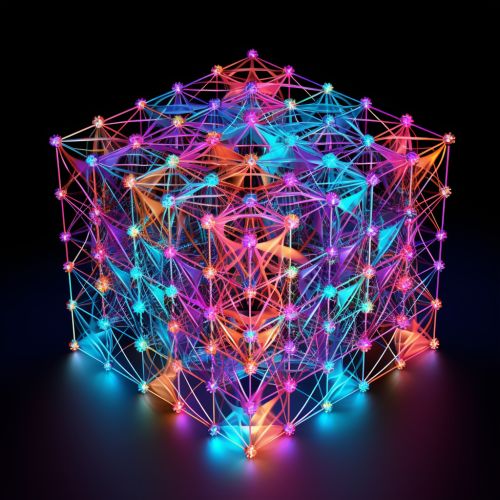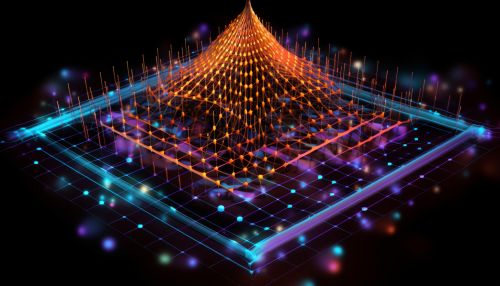Surface code
Introduction
Surface code is a type of quantum error correcting code that is used in quantum computing. It is a two-dimensional lattice of qubits, which are the fundamental units of quantum information. The surface code is a promising candidate for implementing fault-tolerant quantum computation due to its high error threshold and relatively simple structure.


Structure
The structure of a surface code is a two-dimensional lattice of qubits. Each qubit is connected to its four nearest neighbors, forming a grid-like pattern. This structure is often visualized as a checkerboard, with the qubits located at the intersections of the lines. The qubits are divided into two types: data qubits and ancilla qubits. Data qubits store the quantum information, while ancilla qubits are used for error detection and correction.
Error Correction
The primary function of a surface code is to protect quantum information from errors. This is achieved through a process known as quantum error correction. In the surface code, this process involves the measurement of certain operators, known as stabilizers, on the qubits. These measurements are used to detect errors and correct them without disturbing the stored quantum information.
The surface code has a high error threshold, which is the maximum error rate below which errors can be corrected faster than they occur. This makes the surface code particularly robust against errors, and is one of the reasons why it is a promising candidate for implementing fault-tolerant quantum computation.
Stabilizers
Stabilizers are operators that are used in the error correction process. In the surface code, there are two types of stabilizers: X-type stabilizers and Z-type stabilizers. These stabilizers are associated with the faces and vertices of the lattice, respectively.
Measurement of the stabilizers provides information about the errors that have occurred. If an error is detected, it can be corrected by applying appropriate quantum gates to the affected qubits.
Fault-Tolerant Quantum Computation
One of the main applications of the surface code is in the implementation of fault-tolerant quantum computation. Fault-tolerant quantum computation is a method of performing quantum computation in such a way that the effects of errors are minimized.
The surface code is particularly well-suited to this task due to its high error threshold and the fact that it allows for the implementation of a universal set of quantum gates. This means that any quantum computation can be performed using only the operations that are compatible with the surface code.
Challenges and Future Directions
Despite its many advantages, there are also challenges associated with the use of the surface code. One of the main challenges is the requirement for a large number of physical qubits to implement a single logical qubit. This is due to the need for redundancy in the error correction process.
Another challenge is the requirement for high-fidelity quantum gates and measurements. While the surface code is robust against errors, it still requires that the basic operations be performed with a high degree of accuracy.
Despite these challenges, the surface code remains one of the most promising approaches to implementing fault-tolerant quantum computation. Future research will likely focus on improving the efficiency of the surface code and developing methods to overcome the challenges associated with its implementation.
